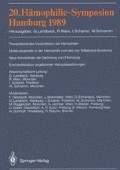Zusammenfassung
Nach Angaben der Weltgesundheitsorganisation (WHO) ist jährlich weltweit mit 500 000 Bißverletzungen durch Schlangen zu rechnen, von denen 30 000 bis 40 000 einen tödlichen Ausgang nehmen [1, 7]. Während Schlangenbisse in Mittel- und Südamerika, Asien und Australien zu alltäglichen Vorkommnissen gehören, für die es allgemein bekannte Verhaltensmaßregeln gibt [9], sind diese Verletzungen in Mitteleuropa sehr selten [6, 17]. Es mehren sich jedoch Anzeichen dafür, daß sich das Halten und Züchten exotischer Schlangen in Terrarien zunehmender Beliebtheit erfreut [19]. Deshalb sollten Erstmaßnahmen, therapeutische Möglichkeiten und Informationsquellen für den Fall einer Schlangenbißverletzung bekannt sein, um im Bedarfsfall wenig Zeit zu verlieren. Anhand der Fallbeschreibung einer Biß Verletzung durch eine mittelamerikanische Lanzenotter (Bothrops atrox, Synonym Fer de Lance) soll dieser Themenkomplex erörtert werden.
Access this chapter
Tax calculation will be finalised at checkout
Purchases are for personal use only
Preview
Unable to display preview. Download preview PDF.
Literatur
Trutnau L (1981) Schlangen im Terrarium, Band 2 Giftschlangen. Verlag Eugen Ulmer, Stuttgart pp 1–35
Kornalik F (1985) The influence of snake venom on blood coagulation. Pharmac Ther 29:353–405
Hofmann H, Dumarey C, Bon C (1983) Blood coagulation induced by Bothrops atrox venom Biochimie 65:201–210
Meier J (1986) Individual and age-dependent variations in the venom of the ferde-lance (Bothrops atrox). Toxicon 24:41–46
Hofmann, H, Bon C (1987) Blood coagulation induced by the venom of Bothrops atrox; Identification, purification and properities of a prothrombin activator. Biochemistry 26:772–780
Lieske, H (1966) Poisonous snake bites in Germany. Mem Inst Butantan, S 3 (l):227–233
Brede, HD, Clarmann M v (1989) Giftschlangenbisse. Münch med Wschr 23:22–32
Supprian, T (1989) Anwendung von Schlangengiften in der Medizin. Med Welt 40:470–472
Reid HA, Theakston RDG (1983) The management of snake bite. Bulletin of the World Health Organization, 61:885–895
Dhaliwal JS, Lim TW, Sukumaran KD (1983) A double antibody sandwich micro ELISA kit for the rapid diagnosis of snake bit. Southeast Asion J Trop Med Pub Hlth 3:367–373
Minton, SA (1987) Present tests for detection of snake venom; Clinical applications Annals of Emergency Medicine 16:932–937
Mebs D, Pohlmann S, Tenspolde W (1988) Snake venom hemorrhagins: Neutralization by commercial antivenoms. Toxicon, 26:453–458
Amaral CFS, Da Silva OA, Godoy P, Miranda D (1985) Renal cortical necrosis following Bothrops jararaca and B. jararacussu snake bite. Toxicon 23:453–458
Anand D, Pulimood R, Jacob CK, Kirubakaran, MG, Shastry JCM (1986) Haemolytic-Uraemic Syndrome Complication Snake Bite Nephron 42:89–90
Patten BR, Pearn JH, de Buse P, Burke J, Covacevich J (1985) Prologned intensive therapy after snake bite. Medical Journal of Australia 142:467–469
Chugh KS, Pal Y et al (1984) Acute renal failure following poisonous snake bite. American Journal of Kidney Diseases 4:30–38
Stahel E, Wellauer R, Freyvogel TA (1985) Vergiftungen durch einheimische Vipern (Vipera berus und Vipera aspis) Schweiz med Wschr 115:890–896
Meißner A, Hausmann B et al (1989) Defibrinierungssyndrom nach Schlangenbißverletzungen. Dtsch med Wschr 114:1484–1487
Wagner, HE Barbier P et al. Akutes Compartment-Syndrom nach Schlangenbiß. Chirurg 57:248–252
Pirkle H, Markland FR (1988) Hemostasis an Animal Venoms (Hematology/Volume 7) Marcel Dekker Inc, New York, pp 3–143
Author information
Authors and Affiliations
Editor information
Editors and Affiliations
Rights and permissions
Copyright information
© 1990 Springer-Verlag Berlin Heidelberg
About this paper
Cite this paper
Leipnitz, G., Heisel, A., Sen, S., Pindur, G., Schieffer, H., Wenzel, E. (1990). Vital bedrohliche Afibrinogenämie und schwerwiegende Veränderungen hämostaseologischer Parameter nach dem Biß einer südamerikanischen Lanzenotter (Bothrops atrox). In: Landbeck, G., Marx, R., Scharrer, I., Schramm, W. (eds) 20. Hämophilie-Symposion Hamburg 1989. Springer, Berlin, Heidelberg. https://doi.org/10.1007/978-3-642-75923-9_40
Download citation
DOI: https://doi.org/10.1007/978-3-642-75923-9_40
Publisher Name: Springer, Berlin, Heidelberg
Print ISBN: 978-3-540-52929-3
Online ISBN: 978-3-642-75923-9
eBook Packages: Springer Book Archive

